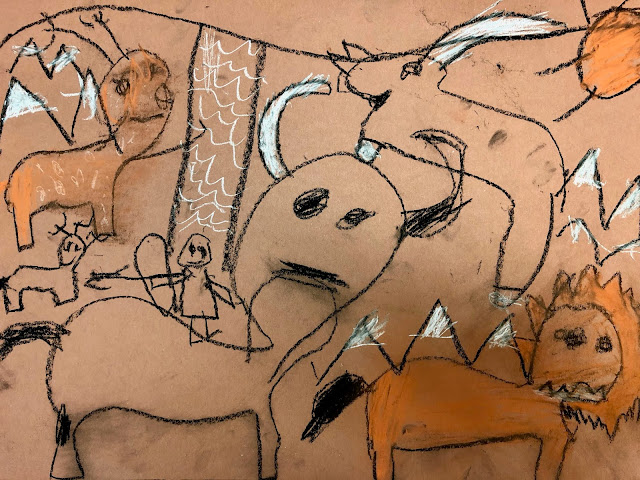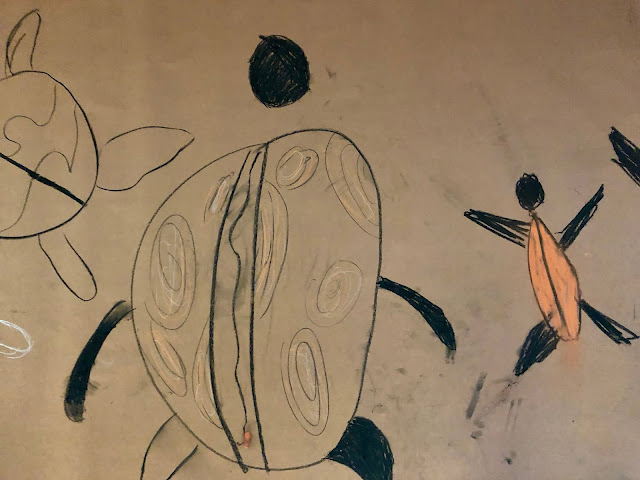A fun lesson using Chinese Brush Painting on Calligraphy Paper to celebrate 2019, The Chinese New Year of the Pig.
What I use:
Printer paper
Ink (or black watercolor) and brush
Banner Paper
Red Paper
Pencils and Eraser
Each year I do a Chinese New Year art lesson.
I have my students practice drawing their animal on copy or printer paper until they get their animal the way the like it.
We always learn how to write the Chinese symbol for the animal as well. Sometimes you can make the animal out of the symbol like this one.
The banner paper is super thin, like tissue so you can easily trace the favorite drawing of the animal lightly with pencil. It also has a nice smooth texture which works well with the brush painting.
Once the animal is traced we put the banner paper drawing out of the way. Now practice brush painting on printer paper and the sketch before painting on the banner paper.
We talk about how to "draw" with a brush and not worry about the thick and thin lines which aren't uniform. The art should look like it was painted with a brush not drawn with a pencil or pen. They need to practice how far will the ink last before they need to dip their brush again and also just to dip the tip of the brush, not the whole brush or it's too much ink. They also practice how hard to push their brush on the paper and when to lift the brush . They need to practice and get a feel for brush painting. I used a very small pointy brush.
Once it is dry you can mount it on red paper to really make it Pop.
We talk about how Red is an important color to the Chinese people.
Red represents fire and is the most popular color in China. It is also the national color representing happiness, beauty, vitality, good luck, success and good fortune.
Red lanterns adorn businesses and residences. Double rows of red "Xi" (happiness) letters are pasted on gates and doors. People wear red during weddings, festivals and other celebratory events. Red envelopes are stuffed with money and given as gifts during Chinese New Year.
Have Fun and Gung Hay Fat Choy!



























































